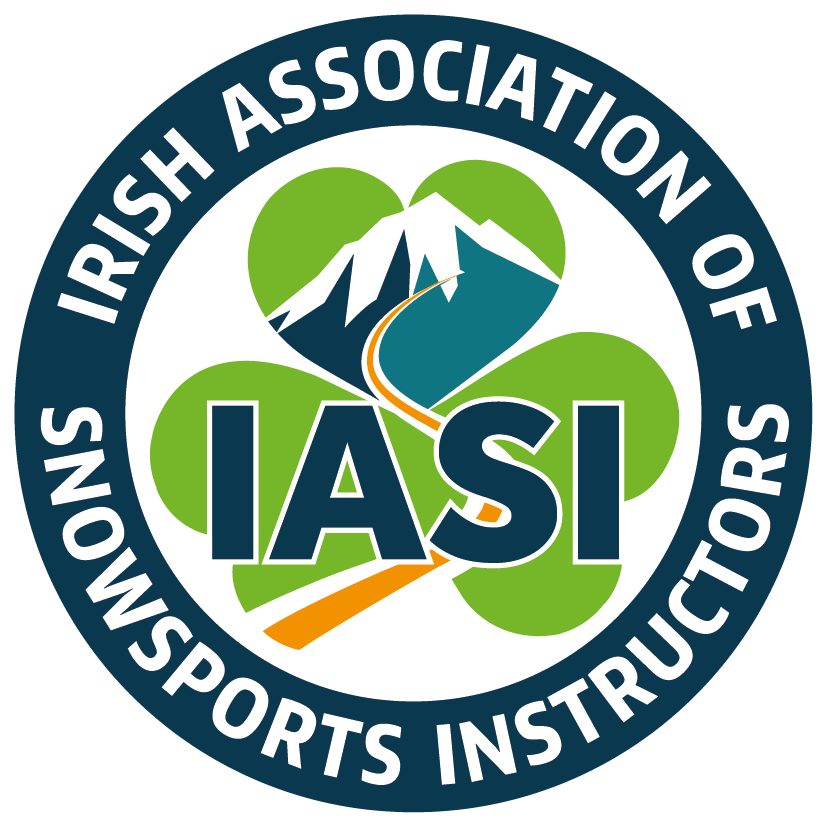IASI Snowsports
Free The Heel!
I’m Ali Smith, a fully qualified IASI Level 4 Ski Instructor and Level 4 Coach. I have been working in snowsports full time for 36 years now, but I am always looking to keep developing and pushing my ability and professional skills, and open to new ideas. Which is what made me want to write about the subject of telemarking for IASI’s inaugural issue of Inside Edge…
I first tried telemarking in Australia in 1996 and picked up the basics quite quickly, but this was really just a give it a go approach with no real instruction, because I originally needed to say I could telemark as part of the Australian Level 3 qualification. Just a simple tick off back then, can you telemark (tick) completed.
So twenty years later, in 2016, I thought I would learn the basics properly and gain the IASI Level 1 qualification. I decided to do the Level 1 Telemark qualification as I have snowboard, race coach and development coach qualifications. This would not only give me another qualification but an insight into teaching another snowsport. It would involve benefitting from the knowledge of another educator and learning new skills. Plus I do love telemarking, and gaining a deeper knowledge and understanding of how telemarking should be done correctly, and improving my personal skills, sounded very appealing.
Free the Heel, as telemarking is known, is the original way of skiing. This is how the first pioneers got around the mountains. I’m always looking at different ways to approach my ski teaching and developing my personal performance. What a great way to do this – by learning another discipline (properly this time) and hopefully gaining another qualification.
So I signed up for the Level 1 Telemark IASI qualification with Scott Hammond. The course was taking place at The Snow Centre, in Hemel Hempstead, near London, in October, so perfect timing before the season gets busy with work. On the course I met lots of like-minded skiers who simply wanted to improve their telemarking and gain new ideas ready for the winter season.
Posture, Balance & Movements soon become key focus points for me. As an experienced alpine skier, to suddenly go back to basics of a new sport on snow for me was fantastic. This is what I normally do with so many skiers, but putting myself into this position of being the learner was great for me to reflect on being empathetic and sympathetic on what and why we do things with learners. These are key for us as instructors to understand our learners.
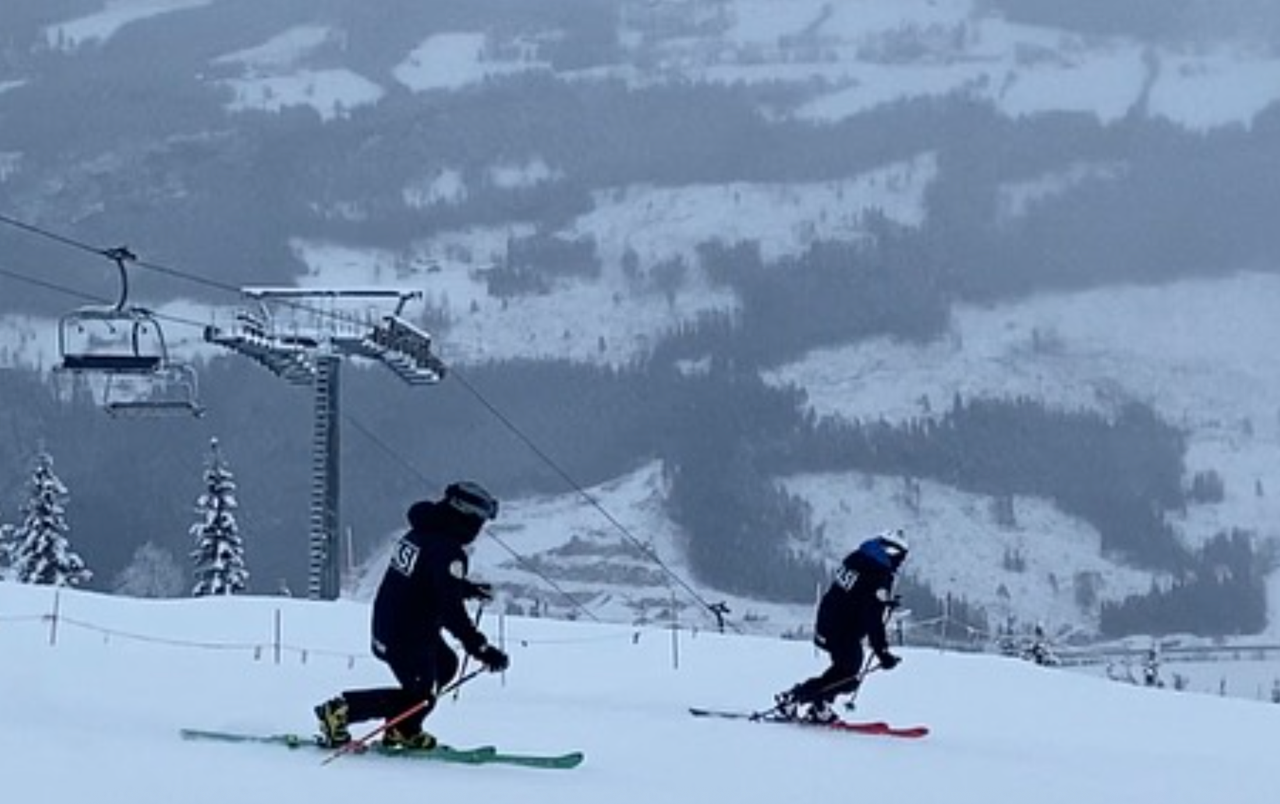
I always like to challenge myself and find new ideas. I quickly worked out I am a visual learner and also like to know the process behind the theory, there are so many ways to learn. Having had that ‘give it a go’ attitude back when I first learnt telemarking, I suddenly realised that getting the basics right with the correct input from our educator Scott made all the difference to my performance. But I was also learning new ideas which are not just for telemarking but for alpine skiing as well. The basic principles of both Tele and Alpine are not that different, the same words put together in a slightly different way. New drills to try and making fun of ourselves falling over, attempting what Scott made look so easy. You could see how the climate was set for success, and the encouragement to keep pushing ourselves was excellent. Not only was I learning a new sport and becoming better at it, I was learning new theories and ideas for my own teaching and delivery.
I was curious to see if I would learn any new ideas from the educator, Scott, for my own educating practice. I was not disappointed, as I gained so many new ideas from him. He’s a great leader, communicator and superb at bringing the team of learners together. I was nervous as well as there is an assessment to pass (thankfully I did), but this reminded me that when I assess candidates as an educator I should always remember how I started my career, and the nerves that go with these assessments for all candidates on all courses.
Whether or not you’re an experienced instructor, going over the delivery of the new information we gained was great. Working closely with our fellow candidates, the teamwork kicked in and we all forged a close bond during the course, which Scott encouraged, and we all started to bounce ideas off each other. Experience counts for nothing when you have to get the progression correct and say the right theory at the right time. Even though I am an educator of alpine, I was working along side some IASI Level 1 & 2 qualified instructors, but we all learnt from each other and teamwork which Scott focused on was giving us all so much for our ideas and personal development.
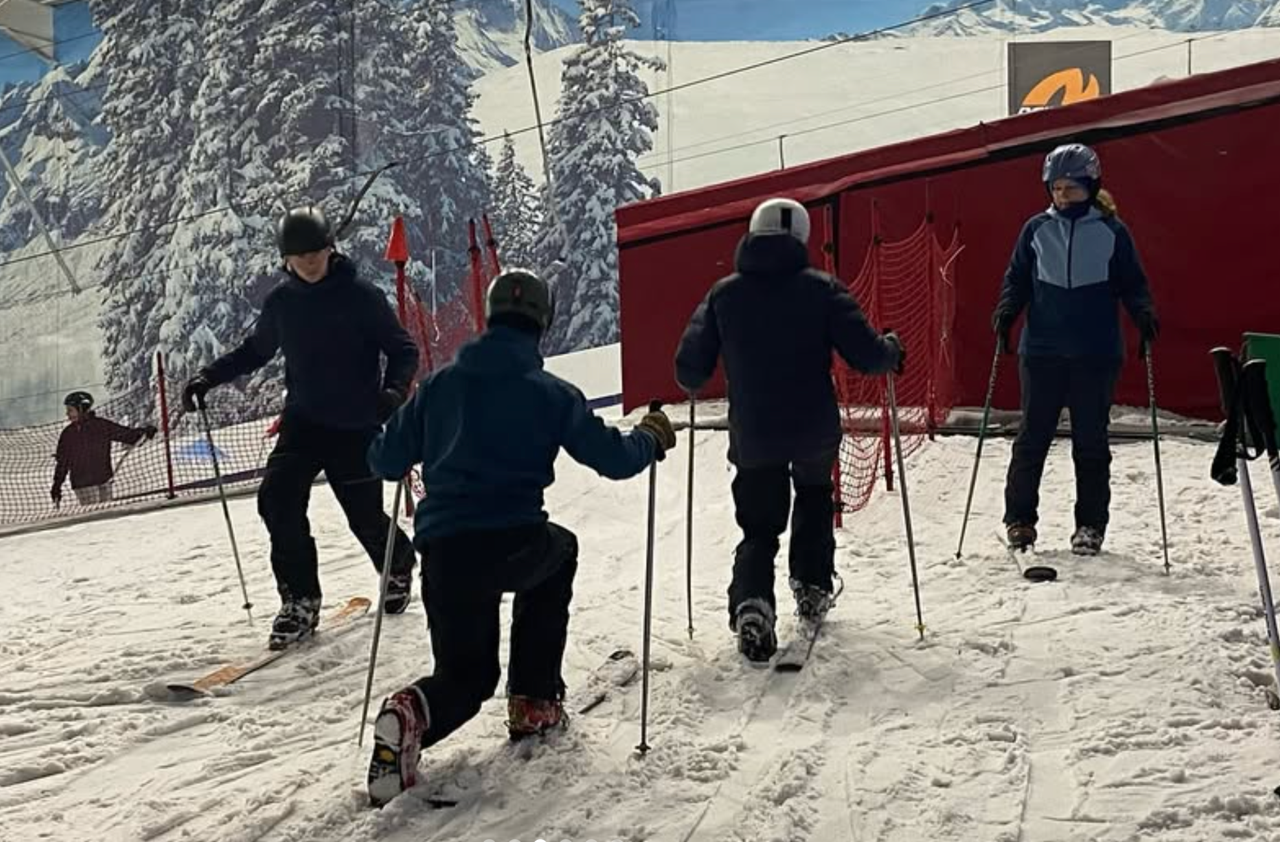
Taking some of the ideas from the course and applying them successfully to my alpine teaching allowed me to experiment with my clients (which I am always in favour of doing) to find multiple ways to achieve success. Some of the games and group work we did on the telemark course, I have used in my alpine educator delivery. We can all keep learning, disregarding the level we are at. A simple phrase or a simple idea can be said in a different way, and suddenly mean so much to so many in our learning. We can say the same thing over and over again, but just simply adjusting the same idea or using a different drill can achieve so much success.
So why learn telemarking? It simply looks great watching a good telemarker (not myself but Scott). This was how all snowsports started so it was also great to learn some of the history of our sports from this course too. You are learning the original way to ski and it suddenly gives you new ideas which you can use and try in your alpine skiing. It is a great way to develop your personal performance and I found some new ideas for my own delivery as well. There are so many positives from learning, and starting to become good at something all over again is always good for the soul. We should never stop learning and keep pushing our performance on snow, off snow, in our ideas and delivery, be Open To Change and be prepared to fail to achieve success. We do learn by our mistakes, so keep pushing ourselves to get the result we want.
Free the Heel and give it a go :-).
Scott says:
To be able to take the Telemark Level 1 course, it is not vital that you have skied telemark before, but of course some telemarking experience is an advantage. If not, as an alpine skier, you should be able to make alpine parallel turns on a blue / red slope as a minimum to attend the course.
For equipment, The Snow Centre does not rent out telemark kit, but they do have a large private stash of tele boots and skis free to use if you would like to give it a go. Ask for Pete Gillespie at The Snow Centre and he can lead you in the right direction. Also, there are many instructors at The Snow Centre who are qualified telemark instructors, Ali Smith being one of them!
In most cases, if you telemark (not just once, but as another means of sliding throughout the season) your alpine skiing will get better by not alpine skiing. The reason is quite simple. Due to more precise balance points of the telemark position and the fact that your heel is not connected as in alpine skiing (where, if you make a mistake, you can cheat by beasting it), telemark will treat you with a little less respect when your balance is not perfect. It requires a more sensitive feeling of your contact with the snow, equipment and the position that is required. Does your telemarking get better by alpine skiing? Well, the answer is no! 🙂
As far as telemarking’s influence on Ali’s skiing goes, it is impossible to say that it made his skiing better as he is one of the best, most balanced skiers you will ever see, so to improve his skiing is a tough one…. But what the telemark course will do is, as Ali says, give you as an instructor the empathy to understand your learners’ journeys, as most of us simply do not remember ours. Also seeing how another discipline is taught, and the similarities and differences, will expand your teaching repertoire.
Telemarking makes the mountain bigger and bad snow days more fun. Skiing with friends who are not at your level is another great reason to telemark, so you don’t get bored and pushed into teaching on your days off. The boots are comfier, and it and prompts conversation with folk who have never seen it before. There’s many a good skier on the mountain, but a good telemarker is a real head turner. Telemark skiing is a social sport and done by enthusiasts, sometimes to the point of fanatics, but they will always stop and talk to you. Its a real community! But the real benefit of telemarking is that it gives you thighs of steel and the best buttocks on the mountain.
If you’re interested in learning or developing your telemarking, IASI is running a L1 Telemark course this October at The Snow Centre – see the course calendar on the IASI website for details.
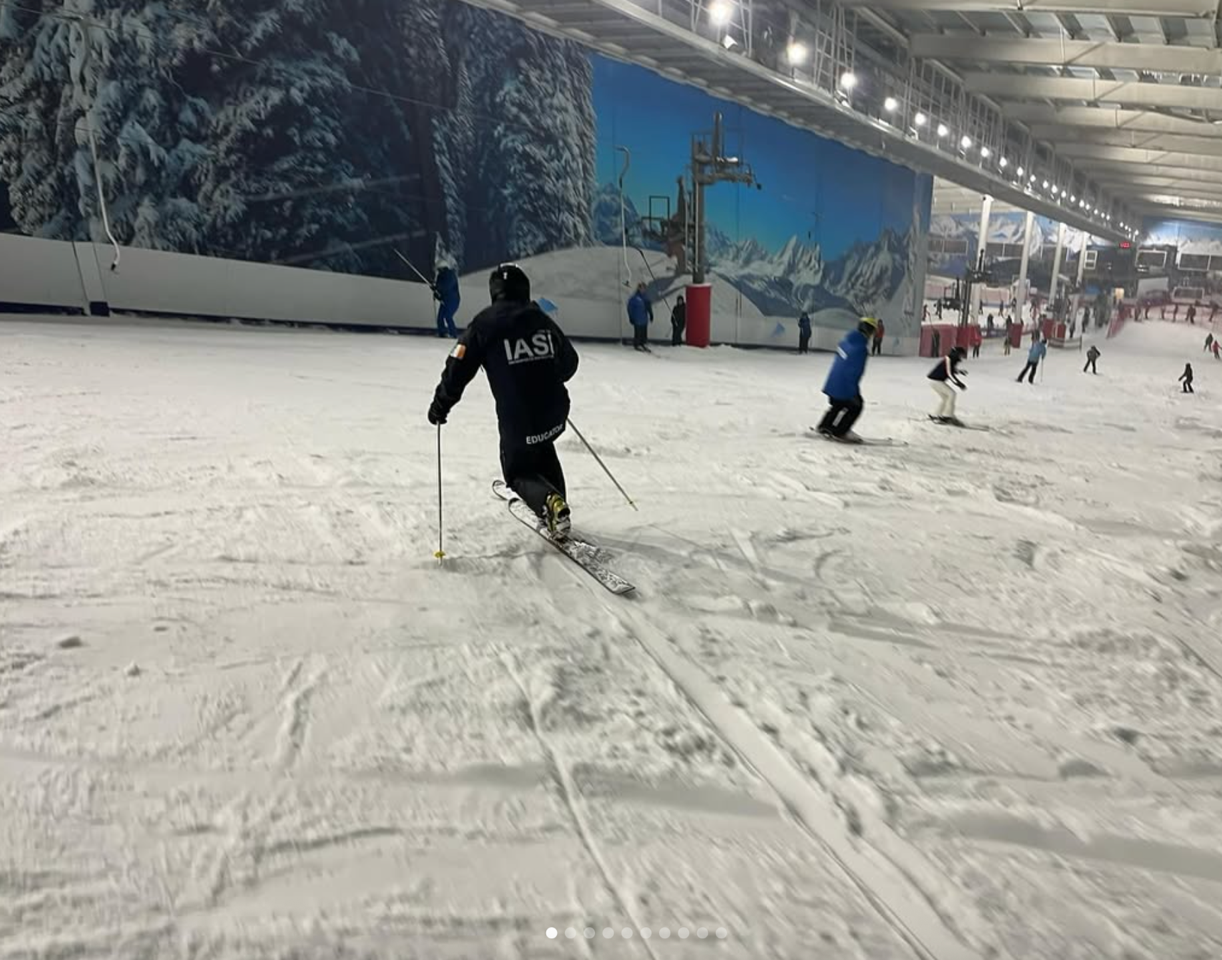
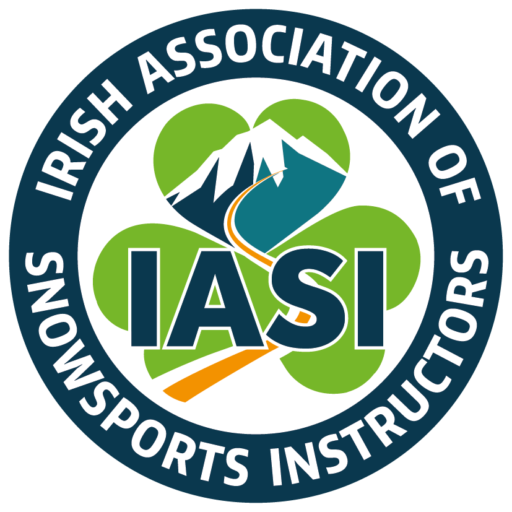
Latest Posts
- Race training and the instructor journey
- The Off-Season Advantage
- Free the Heel!
- Rich Egan – A Day in the Life
- Introducing Michael Edwards – Head of Education
- IASI delivering Freestyle Coach Level 1
- A Day in the Life – Ali Smith
- IASI and Interski Information
- Important Note from the ISIA Board
- A Day in the Life – Sara Jones
